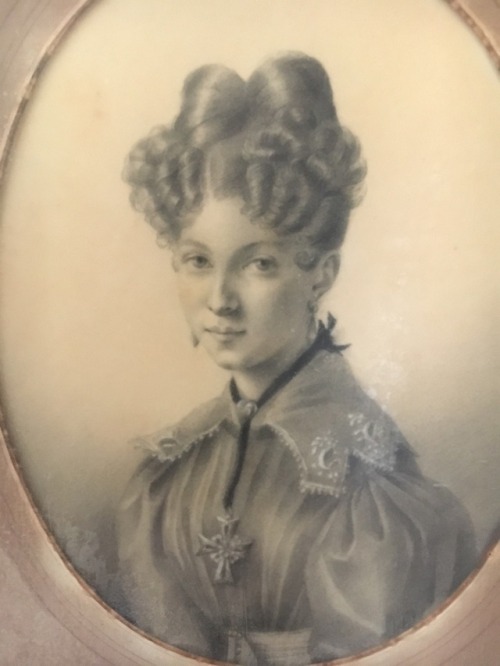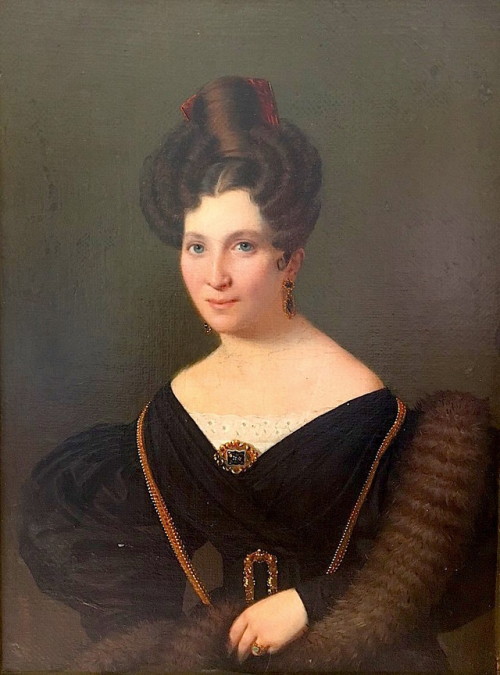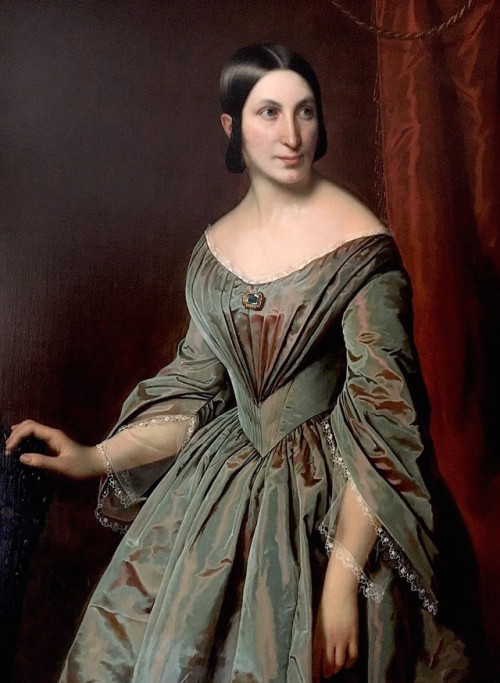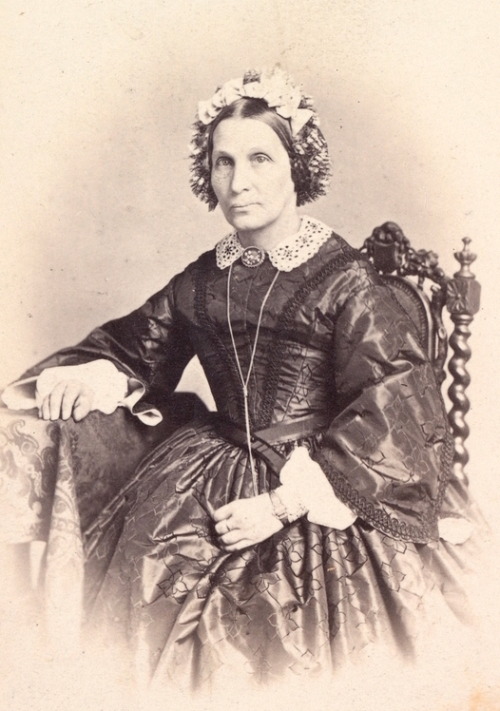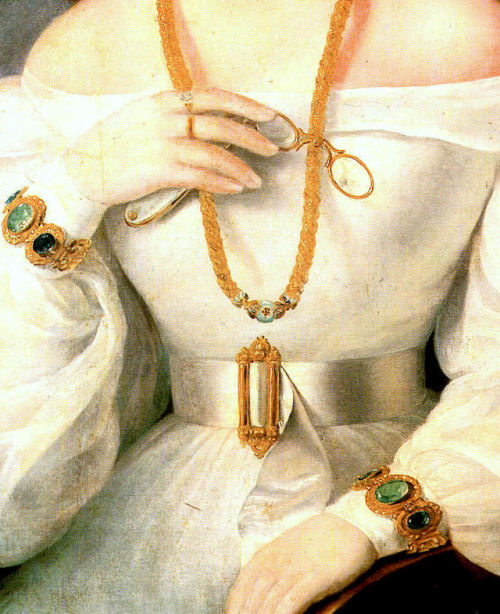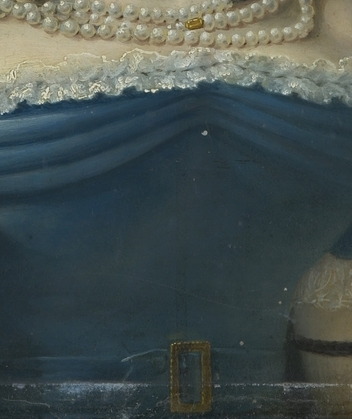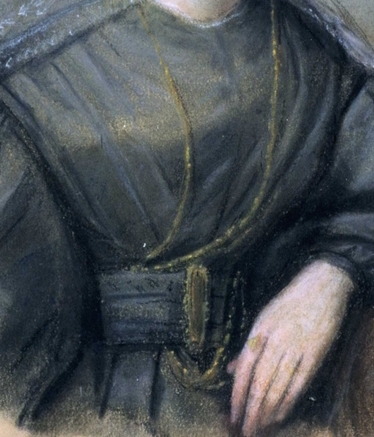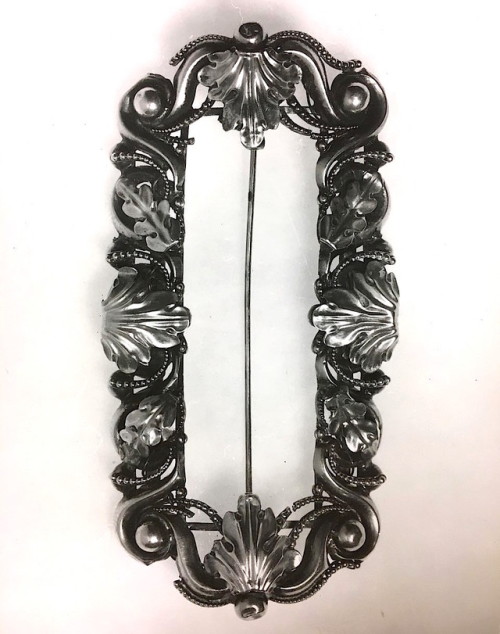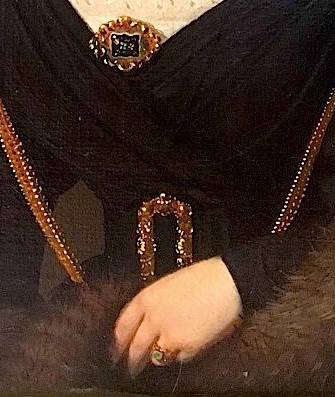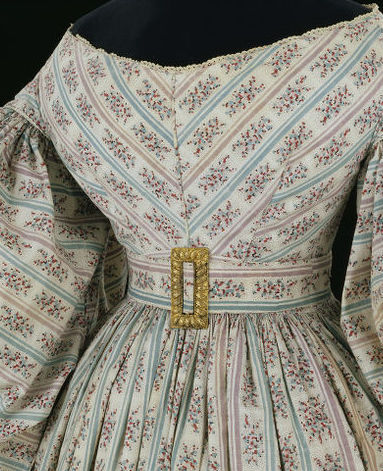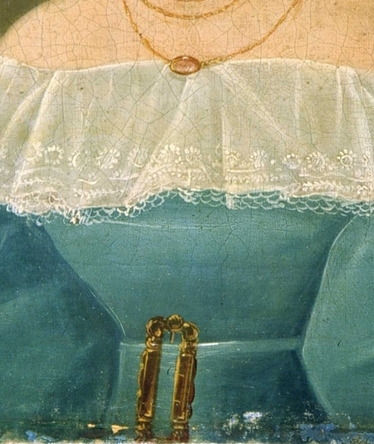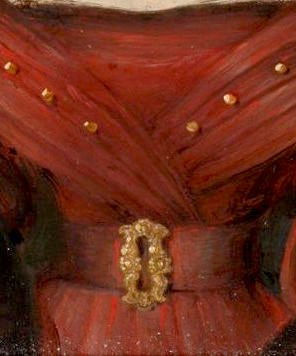#aument
Juliane Elise Larpent (1807-90), documented in portraits
- 1823:Painted around age 16, by Mme. Isabeau. The way she wears her green scarf is fabulously modern! A lock of her hair is said to be inside the frame, along with a note from her son Sophus Larpent.
- 1824-26:Drawn around age 18, unknown artist. There is a similar portrait of her younger sister Louise made around the same time, wearing the same type of dress and collar, and an identical necklace.
- 1827:Painted around age 20, by Aument. This is at the height of Regency fashion, with a large hair comb, and a big metal buckle in the waist. The buckle is still within the family today. She’s showing off a ring at the left hand, it might have been a portrait painted when she got engaged to Isaac Larpent. The couple married in 1830.
- 1850s:Painted around age 40, by David Monies. She looks so different from her younger portraits; at least the nose seems more exaggerated. However, the dress is absolutely splendid, featuring green silk shot with red, and a lovely fan fold decorated bodice with pagoda sleeves.
- 1870s:Here she is around 70 years, documented by photographer Wilhelm Cappelen. By now she would have had some 15 grandchildren, 11 of whom she took care of. The plot twist is that two of her daughters were married to the same man - albeit not at the same time - and had 11 children in total. So her son-in-law became a widower for the second time she moved in with him to take care of all the grandchildren. She was a majestic figure, only known as “Grandma Larpent”.
- 1870s:A photo where she wears either the same dress slightly remodeled, or a dress made of the same fabric. It might also have been a “transformation dress”; one skirt with two bodices. Whatever the case, the bodice and sleeves are different, and she wears another belt and collar, but the fabric is the same in both photos. She was probably in her mid 70s here. She lived until the age of 83.
Post link
One of the most typical Romantic era fashion details I know of is the big, quadratic belt buckle women wore to emphasis their waist.
After some decades of a raised waistline and column-like silhouette, narrow waists once again came into fashion, helped by a new hourglass shaped corset that further underlined the shape. And the big buckle was the the finishing detail, the exclamation point. Here’s some examples.
- “Portrait of a Woman”, 1831, by Miklós Barabas (unknown location)
- “Portrait of Eleonore Thulstrup”, early 19th century, by Jacob Munch (Oslo Museum, OB.00484)
- “Portrait of Christine Kemp Keilhau”, 1835, by Johan Görbitz (Oslo Museum, OB.00258)
- Ribbon belt and golden buckle on a pigeon blue dress, 1830s (from Cora Ginsburg auctions)
- Golden buckle, 1827 (private collection)
- “Portrait of Juliane Elise Larpent”, 1827, by Aument (Linderud gård, Oslo). Here she is wearing the very buckle seen in photo 5.
- Golden buckle and belt made of the same fabric as the dress, 1830-34 (Victoria and Albert Museum, London, T.168&A-1915)
- “Portrait of Henriette Hansen”, 1831, by Richter W. (Oslo Museum, OB.00049)
- “Portrait of Paula Schedius”, 1834, by Carl Rahl (unknown location)
Post link


